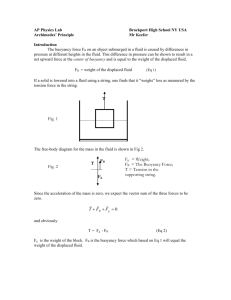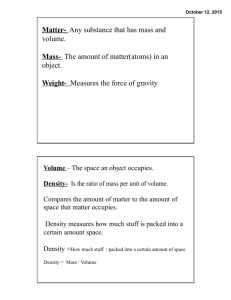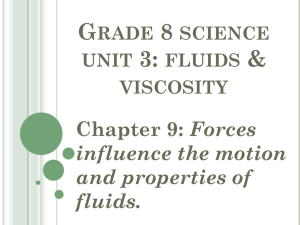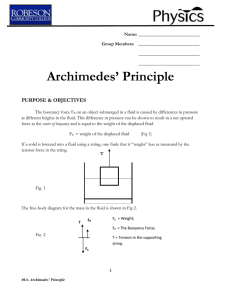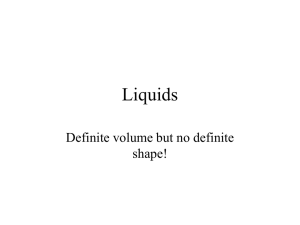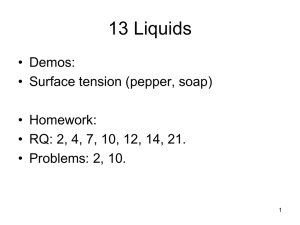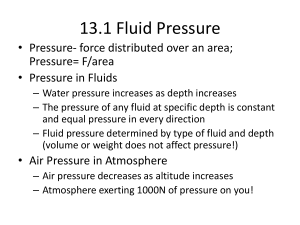Archimedes' Principle Lab: Buoyancy & Density
advertisement
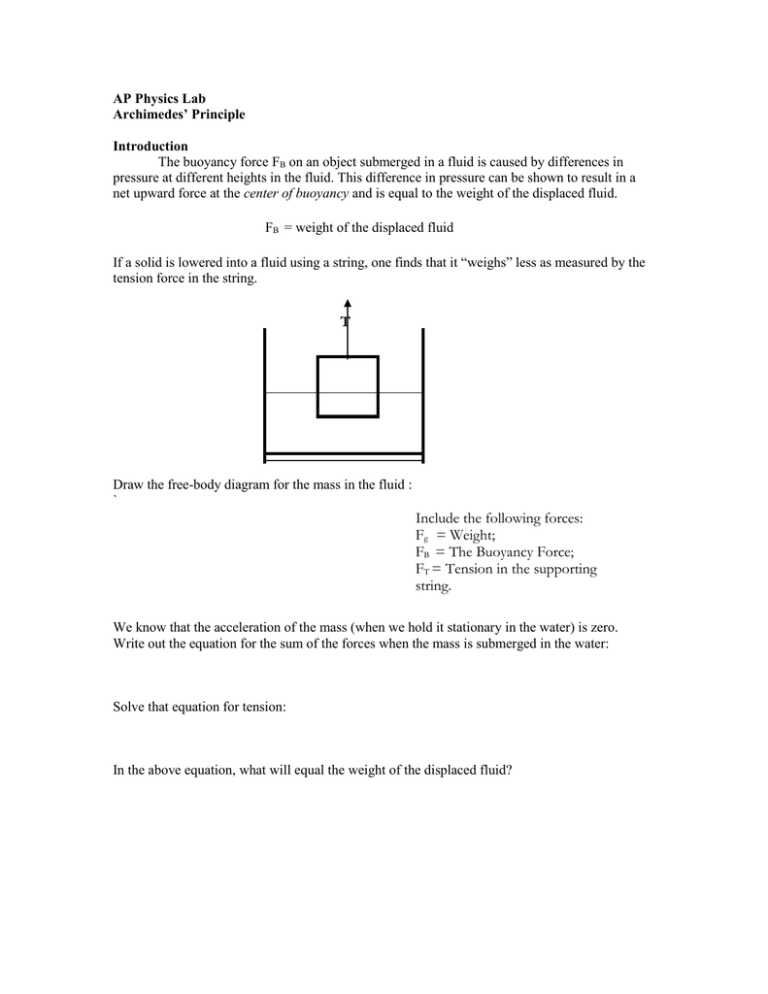
AP Physics Lab Archimedes’ Principle Introduction The buoyancy force FB on an object submerged in a fluid is caused by differences in pressure at different heights in the fluid. This difference in pressure can be shown to result in a net upward force at the center of buoyancy and is equal to the weight of the displaced fluid. FB = weight of the displaced fluid If a solid is lowered into a fluid using a string, one finds that it “weighs” less as measured by the tension force in the string. T Draw the free-body diagram for the mass in the fluid : ` Include the following forces: Fg = Weight; FB = The Buoyancy Force; FT = Tension in the supporting string. We know that the acceleration of the mass (when we hold it stationary in the water) is zero. Write out the equation for the sum of the forces when the mass is submerged in the water: Solve that equation for tension: In the above equation, what will equal the weight of the displaced fluid? In this lab you will use a rubber stopper, you will calculate its mass using a scale, and then calculate its volume by submerging it in water. Calculate how to get the density of the rubber stopper. Given that the density of rubber is ~ 1100 Kg/m3, does this match up with what we found experimentally? If not, why do you think that is? From here, we can determine the buoyancy of the stopper. Lower the stopper on a spring scale into a beaker of water. What is the Write out the equation for the force of buoyancy for our problem (use f for the density of the fluid): A graph of T vs (Agh) can then be used for finding the density of the fluid. Plot the apparent weight as measured by the tension T against (Agh). The slope of the resulting straight line will yield 0. Compare your results with known values for the density of water at the temperature of the water. 2
